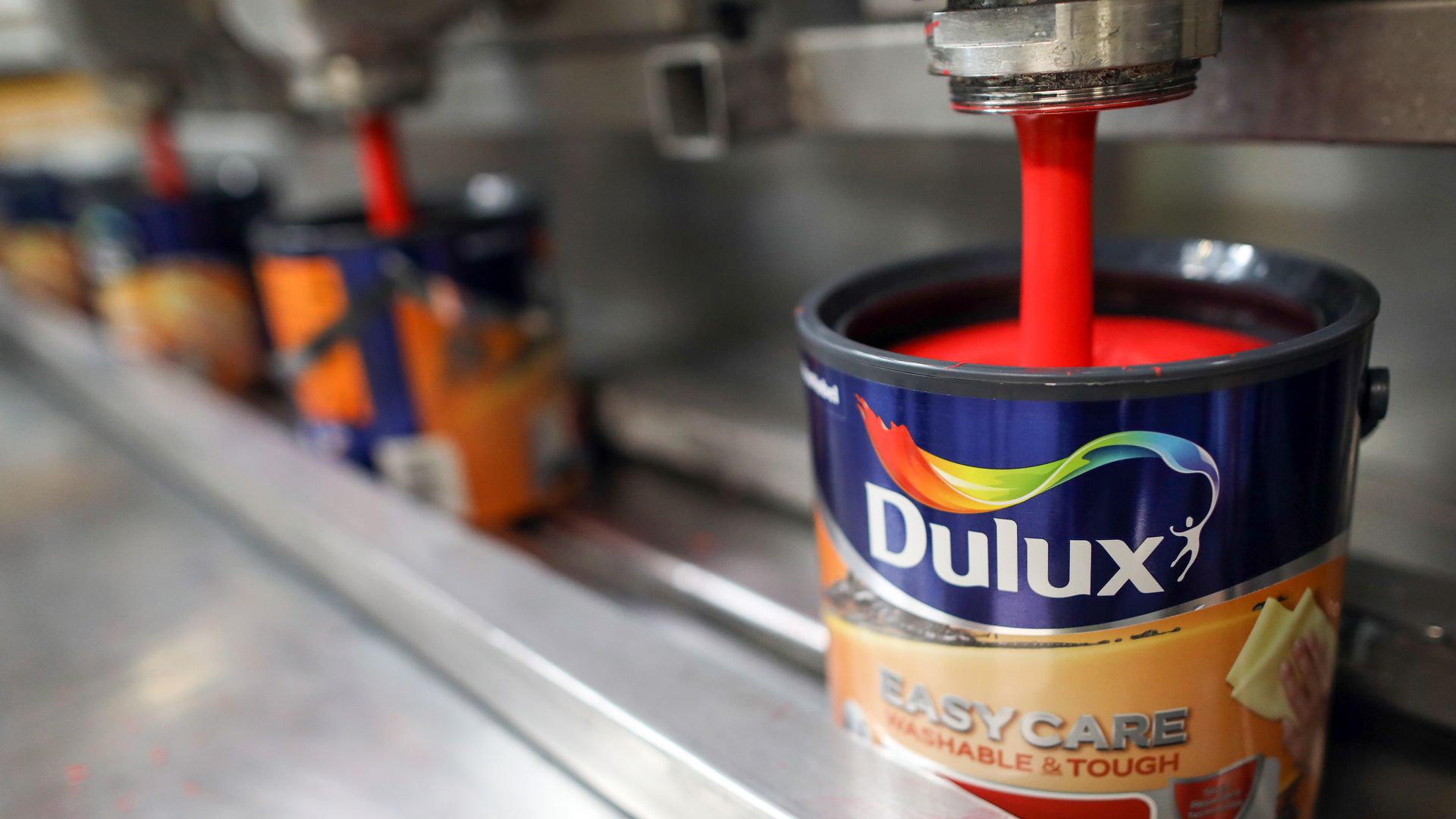| | | | | | | Presented By ProEdge, a PwC Product | | | | Axios Markets | | By Sam Ro ·Jul 13, 2021 | | Today's newsletter is 1,250 words, 4.7 minutes. Situational awareness: The June Consumer Price Index report will be released at 8:30am ET. Economists will be looking at items like used car prices to judge whether inflation is really transitory. 💬of the day: "I rather hate it and I would much prefer to spend my time on design and engineering, which is what intrinsically I like doing." - Elon Musk on being the CEO of Tesla | | | | | | 1 big thing: Boardroom diversity pays off |  Data: BoardReady; Chart: Connor Rothschild/Axios There's a fresh data point on how corporate America fared during the pandemic year, Axios' Courtenay Brown writes. - Businesses with more diverse boards came out on top, according to data provided first to Axios by BoardReady, a nonprofit.
Why it matters: It adds to a ballooning body of research that shows that generally better business comes alongside boardrooms that are less old, male and white. To be clear, the data doesn't prove companies did better because their boards were more diverse — there is a slew of other factors that play a role. What they're saying: "There isn't enough data yet to show causation, but there's strong correlation," says Deanna Oppenheimer, founder of BoardReady. By the numbers: As a cohort, the companies with more women on their boards saw the smallest year-over-year drop in revenue growth in 2020. - And a group of companies with board members whose ages spanned over 30 years saw an improvement in revenue growth compared to the prior year. The rest saw growth slow.
- The businesses with at least 30% of seats filled by non-white executives saw a bigger jump in revenue growth. However, those that had between 20% and 30% non-white board executives fared worse than those with fewer non-white members.
- BoardReady cautions that this data might be skewed because so few companies have enough non-white executives on their boards to meet that threshold.
What to watch: The data comes as there's a sea change of sorts in corporate America. Legislators, regulators and the Nasdaq are eyeing the makeup of corporations' top decision-makers — and pushing them to step it up on diversity. - "People used to ask the question: 'Why diversify?' The debate has now moved on from why to how," says Oppenheimer.
Where it stands: The numbers are improving, though still dismal. Worth noting: BoardReady used revenue as a yardstick — rather than say, profits or EBITDA — to avoid the data being distorted by any adjustments companies made during the pandemic, the study says. See the report. |     | | | | | | 2. Catch up quick | | President Biden is expected to warn U.S. companies of the growing risks of operating in Hong Kong. (FT) Oil prices could surge unless the OPEC+ alliance agrees to increase production, the IEA warns. (Reuters) China's export growth unexpectedly accelerated in June. (Reuters) |     | | | | | | 3. The future of regulating risky corporate lending |  | | | Illustration: Aïda Amer/Axios | | | | U.S. and European financial regulators have alluded to revamping oversight as a way to keep a lid on leveraged lending, Axios' Kate Marino writes. - But doing so would be complicated because much of the world's risk-taking doesn't happen directly in regulated institutions like banks.
Why it matters: The European Central Bank's supervisory chair, Andrea Enria, acknowledged in a recent speech that when central banks' unprecedented market support goes away it could leave markets exposed to price corrections. - Put another way, bubbles could pop.
Driving the news: Enria said that the ECB should take supervisory action in areas like leveraged credit, the riskiest area of corporate debt. He also called for more oversight of equity-related derivatives such as total return swap contracts, which were infamously employed by Archegos Capital to increase its positions. The big picture: Agencies like the ECB, or the Federal Reserve and Treasury Department in the U.S., have purview over regulated institutions, but not over hedge funds and family offices, or over the rapidly growing private debt market. What they're saying: Treasury Secretary Janet Yellen has said she's interested in a regulatory regime that shifts the focus from systemically important institutions to systemically important activities. - That would cast a broader net for who and what could be subject to government oversight.
- Enria said that due to "the broader problem of the opaqueness of the shadow banking sector and the degree of interconnectedness in financial markets … it is necessary to revamp the regulatory and supervisory dialogue."
Context: There's a lot less leverage in the system now compared with before the financial crisis, somewhat mitigating the overall risk in the U.S., Steven Wagner, senior portfolio manager at Federated Hermes, tells Axios. What to watch: Any major oversight changes in the U.S. will likely have to come legislatively, Richard Farley, chair of Kramer Levin's leveraged finance group, tells Axios. - While that's probably not high on the Biden administration's priority list now, don't be surprised if a proposal comes in 2022 — before the midterm elections, when control of Congress could shift, Farley adds.
Keep reading |     | | | | | | A message from ProEdge, a PwC Product | | Align skills and culture with the changing nature of work | | |  | | | | Readying the enterprise for the future typically includes investment in new technologies. But it also requires ensuring your organization has the right skills to make the most of these technologies. Read the guide from ProEdge, a PwC Product. | | | | | | 4. People usually get the stock market wrong |  The average American consumer thinks it's unlikely the stock market will be higher 12 months from now. Why it matters: Enthusiasm toward stocks is the kind of thing that inflates market bubbles that crash. - On the other hand, caution toward stocks often means prices have room to go higher as that caution is eventually proven unwarranted.
By the numbers: Each month since June 2013, the Federal Reserve Bank of New York has asked consumers: "What do you think is the percent chance that 12 months from now, on average, stock prices in the U.S. stock market will be higher than they are now?" - According to results released Monday, respondents in June said on average that there was a 40.2% likelihood that stocks would higher. That's down from 40.8% in May.
- The only time this measure was above 50% was in April 2020, right after the S&P 500 crashed to a low on March 23.
Yes, but: Ritholtz Wealth Management's director of research, Michael Batnick, says history favors the optimists. - "Going back to 1950, there was a 74.16% chance that the S&P 500 would be higher one year later," Batnick tells Axios.
- "When the S&P 500 was at an all-time high, there was a 74.10% chance the market was higher one year later."
What they're saying: "Consumer sentiment is vulnerable to news items that report negative projections," Oppenheimer strategist John Stoltzfus tells Axios. The bottom line: Just because people believe the stock market is unlikely to produce a positive return doesn't mean it won't produce a positive return. |     | | | | | | 5. When wage growth doesn't buy you more stuff |  | | | Photo: Chris Ratcliffe/Bloomberg via Getty Images | | | | Wages are surging as labor shortages give workers leverage to ask for more money. One big company sees this news as an opportunity to jack up prices. Why it matters: A raise in your pay doesn't mean much if there's a commensurate increase in the prices of goods and services — your spending power will be unchanged. Driving the news: Michael McGarry, the CEO of paint and coatings giant PPG Industries, told Bloomberg that his customers can't argue with the higher prices his company is charging them. - Raw material costs are going up — PPG is exposed to rising oil prices — and customers have a greater capacity to pay.
- "This work-from-home phenomenon is going to lead to additional wage inflation because people are going to have the opportunities to figure out where they want to work," he added.
What they're saying: "Why will consumers pay more? Because they can afford it," SGH Macro Advisors economist Tim Duy writes in a note to clients. - Duy says that inflation measures like CPI should be considered in the context of other key variables.
- "The main event is the dynamic between expectations, inflation, and wages," he writes. "One part of that dynamic is firms believing the consumers no longer have a choice but to absorb price increases."
What to watch: Duy says to keep an eye on this dynamic as it, among other things, may complicate the Federal Reserve's efforts to stimulate employment while maintaining price stability. |     | | | | | | A message from ProEdge, a PwC Product | | Align skills and culture with the changing nature of work | | |  | | | | Readying the enterprise for the future typically includes investment in new technologies. But it also requires ensuring your organization has the right skills to make the most of these technologies. Read the guide from ProEdge, a PwC Product. | | |  | | It'll help you deliver employee communications more effectively. | | | | | | Axios thanks our partners for supporting our newsletters. If you're interested in advertising, learn more here.
Sponsorship has no influence on editorial content. Axios, 3100 Clarendon Blvd, Suite 1300, Arlington VA 22201 | | | You received this email because you signed up for newsletters from Axios.
Change your preferences or unsubscribe here. | | | Was this email forwarded to you?
Sign up now to get Axios in your inbox. | | | | Follow Axios on social media:    | | | | | |








No comments:
Post a Comment